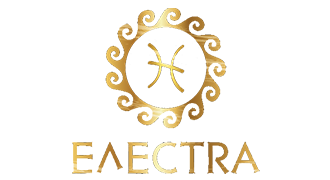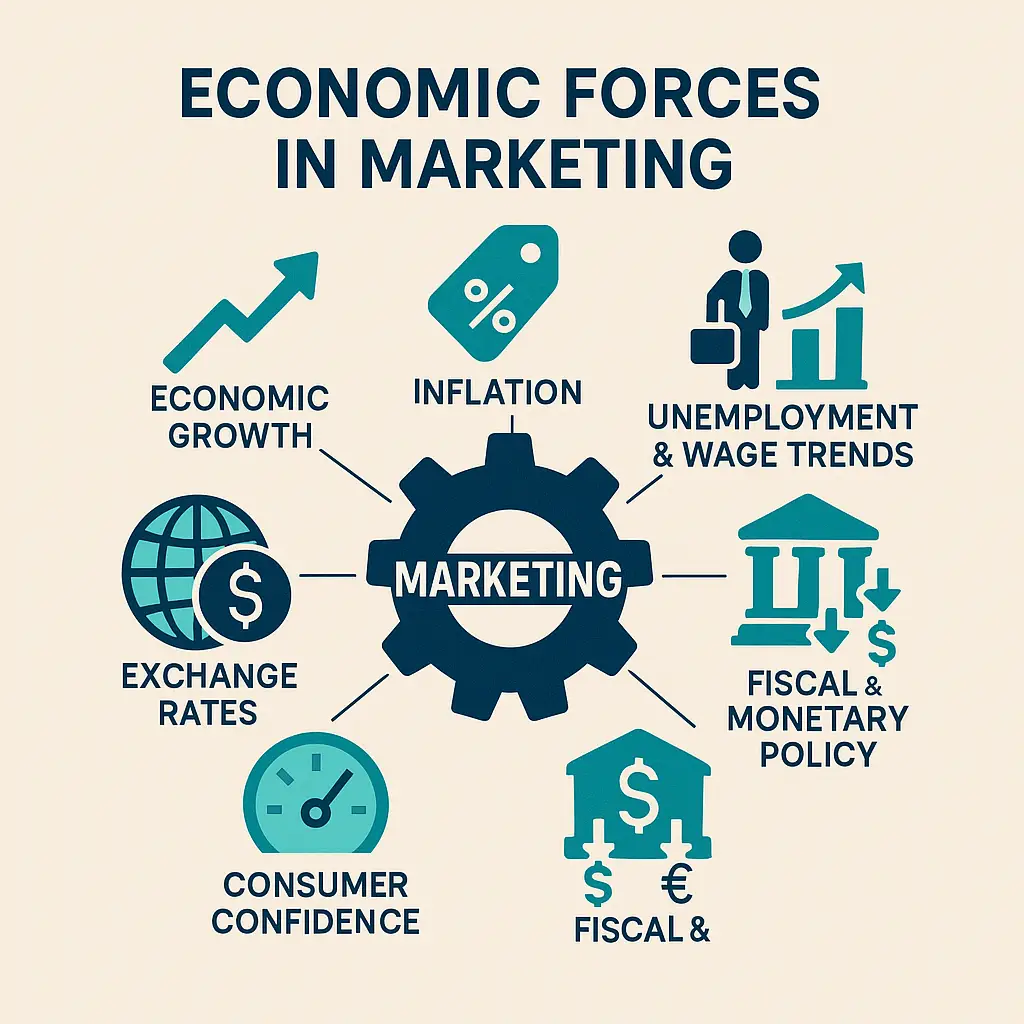Deep Dive: Economic Forces Shaping Marketing Strategy
Economic forces exert a powerful influence on consumer behavior, pricing, channel selection, and overall brand positioning. Below are the key economic variables marketers must monitor—and actionable ways to turn insights into competitive advantage.
1. Economic Growth & Business Cycles
- Expansion Phases: When GDP growth is strong, consumers feel confident spending on both essentials and discretionary goods.
- Marketing Takeaway: Prioritize premium product lines, experiential campaigns, and upselling opportunities.
- Recession Phases: Slowing growth or negative GDP dampens spending on non-essentials.
- Marketing Takeaway: Shift messaging toward value, bundle deals, and loyalty rewards to retain budget-conscious customers.
2. Inflation & Price Sensitivity
- Rising Costs: As prices climb, households reassess budgets and may trade down to cheaper brands.
- Marketing Takeaway:
- Offer flexible payment plans (installments, “buy now, pay later”).
- Introduce economy-size packaging or “value” product tiers.
- Highlight cost-per-use or long-term savings (e.g., energy-efficient appliances).
- Marketing Takeaway:
- Deflationary Pressures: Falling prices can signal weak demand—but also create opportunities for price promotions to stimulate purchases.
- Marketing Takeaway:
- Time flash sales around consumer psyche shifts.
- Use price-anchoring techniques (showing original vs. discounted price).
- Marketing Takeaway:
3. Interest Rates & Credit Availability
- High Interest Rates: Consumers and businesses face costlier borrowing; big-ticket purchases (homes, cars, B2B equipment) often get postponed.
- Marketing Takeaway:
- Emphasize cash-back incentives, zero-interest financing offers, or leasing options.
- Target messaging to cash-rich segments less sensitive to borrowing costs.
- Marketing Takeaway:
- Low Interest Rates: Easier credit spurs investments and durable goods demand.
- Marketing Takeaway:
- Partner with finance providers to push installment plans.
- Accelerate long-term purchase cycles via low-APR deals.
- Marketing Takeaway:
4. Unemployment & Wage Trends
- High Unemployment: Overall spending contracts, but demand for essential goods (food, basic clothing, household staples) stays resilient.
- Marketing Takeaway:
- Focus on “everyday value” offerings with clear ROI for consumers.
- Leverage performance-based promotions (e.g., “Spend $50, get $10 back”).
- Marketing Takeaway:
- Rising Wages: Greater disposable income can reignite demand for premium or luxury segments.
- Marketing Takeaway:
- Launch limited-edition or higher-margin products.
- Upsell add-ons and premium bundles to newly affluent cohorts.
- Marketing Takeaway:
5. Consumer Confidence & Sentiment
- Consumer Confidence Index (CCI): Tracks how optimistic households feel about the economy and personal finances.
- Marketing Takeaway:
- In high-confidence periods, roll out aspirational branding and emotional storytelling.
- In low-confidence periods, ground messages in practicality, reliability, and trust.
- Marketing Takeaway:
6. Exchange Rates & Global Supply Chains
- Currency Fluctuations: For exporters/importers, a strong home currency makes imports cheaper but exports pricier abroad.
- Marketing Takeaway:
- Hedge pricing or localize production to mitigate volatility.
- Adjust international pricing dynamically—using geo-targeted ad campaigns that reflect current rates.
- Marketing Takeaway:
- Supply-Chain Costs: Fuel prices, shipping rates, and raw‐material volatility can squeeze margins.
- Marketing Takeaway:
- Communicate supply-chain transparency (“Made locally to reduce costs and carbon footprint”).
- Consider just-in-time (JIT) inventory and demand-forecast tools to optimize stock levels.
- Marketing Takeaway:
7. Fiscal & Monetary Policy Impacts
- Government Spending & Tax Policy: Infrastructure bills or corporate tax cuts can spur sectoral booms (e.g., green energy, construction).
- Marketing Takeaway:
- Align product offerings with emerging policy-driven demand (e.g., eco-friendly lines when green subsidies kick in).
- Advocate—through thought leadership—around policy benefits to position your brand as an industry champion.
- Marketing Takeaway:
- Central-Bank Actions: Quantitative easing or tightening directly affects liquidity in markets.
- Marketing Takeaway:
- Monitor central‐bank statements; adjust campaign spend when money supply conditions tighten.
- Use programmatic ad platforms to throttle daily budgets in real time.
- Marketing Takeaway:
Action Steps for Marketers
- Set Up an Economic Dashboard: Integrate real-time feeds for GDP growth rates, CCI, inflation, and exchange rates.
- Run Quarterly Scenario Tests: Model how a 1% change in interest rates or inflation would impact revenue and ROI.
- Cross-Functional Collaboration: Partner with finance and operations to forecast cost changes and plan marketing budget adjustments.
- Agile Campaign Frameworks: Build modular ads and landing pages that can be tweaked rapidly as economic data shifts.
By drilling down into these economic dimensions—and weaving real‐time data into your decision‐making—you’ll be equipped to craft marketing strategies that thrive in any fiscal climate.

